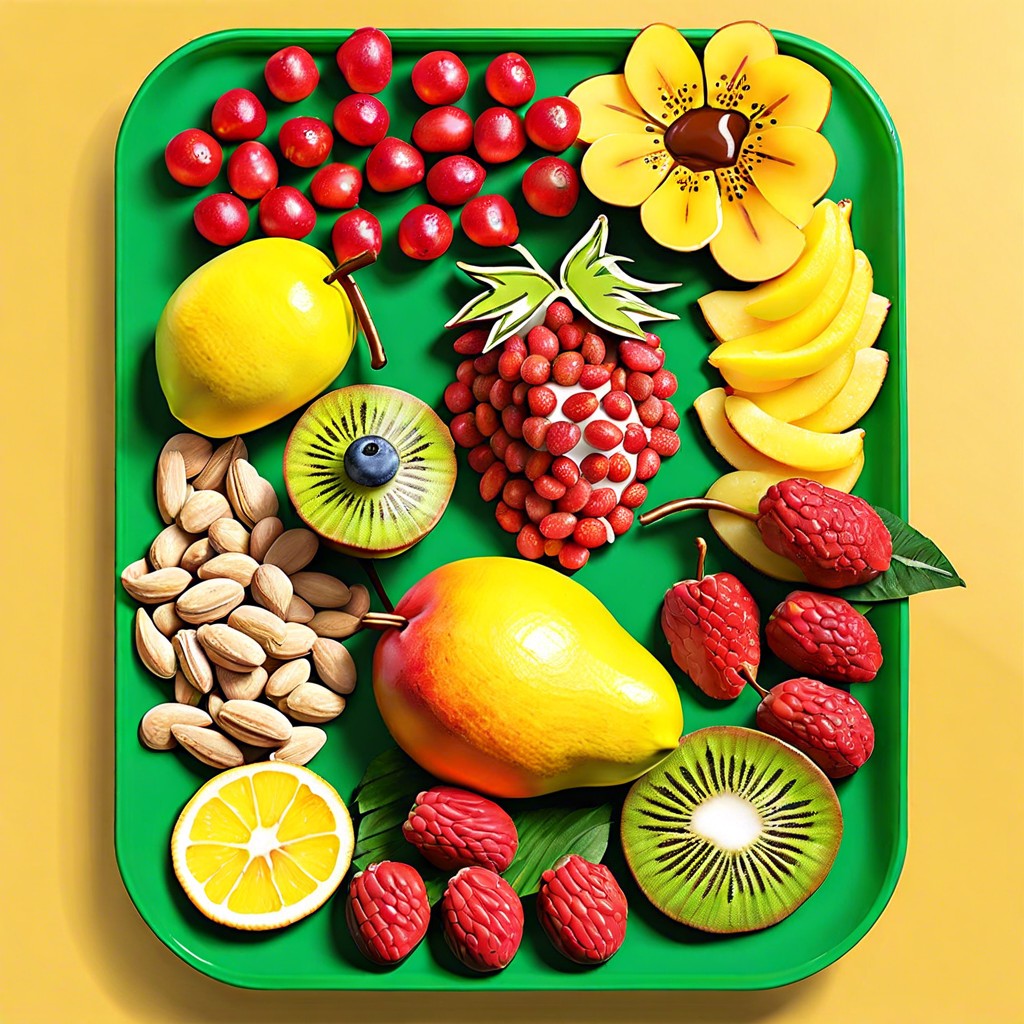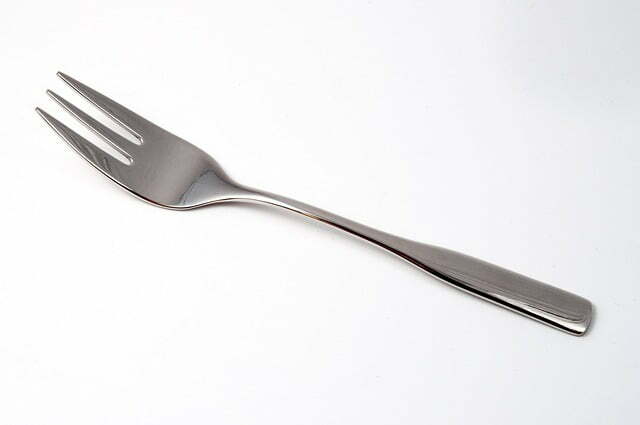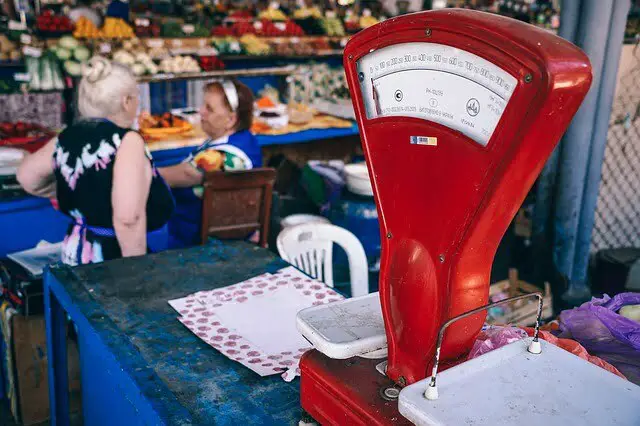Discover the art of presenting a platter that will impress your guests and elevate your next gathering with our step-by-step guide.
Have you ever been to a fancy dinner party or a gathering where the food was presented so beautifully that it made your mouth water before you even took a bite? The way food is presented can make all the difference in how it is perceived and enjoyed. One dish that always stands out when presented well is a platter.
Whether it’s for an intimate dinner or a large event, presenting a platter can be both an art and science. In this blog, we’ll explore some tips and tricks on how to present a platter that will impress your guests and elevate any occasion.
So, let’s get started!
Choosing the Right Platter

When it comes to presenting a platter, choosing the right platter is crucial. The size and shape of the platter will determine how much food you can fit on it and how aesthetically pleasing your presentation will be.
Consider the number of guests you are serving, as well as what type of occasion it is when selecting your platter. For example, if you’re hosting a small dinner party with just a few guests, consider using smaller plates or bowls for individual servings rather than one large shared plate.
Another factor to consider when choosing a platter is its material. Platters come in various materials such as ceramic, glass or metal; each has its own unique look and feel that can complement different types of foods or occasions.
Selecting the Food Items
First and foremost, think about the occasion and your guests’ preferences. Are you hosting a formal dinner party or a casual get-together? Will there be any dietary restrictions or allergies among your guests? These factors will help guide you in choosing appropriate foods.
Next, consider the flavors and textures of each item. A good platter should have a balance of sweet, salty, savory, and spicy flavors as well as different textures such as crunchy or creamy.
It’s also important to choose foods that complement each other well.
Another factor is seasonality – incorporating seasonal fruits and vegetables can add freshness to your platter while also supporting local farmers.
Considering Dietary Restrictions
This can include allergies, intolerances, or personal preferences such as vegetarianism or veganism. Before preparing your platter, make sure you ask your guests about any dietary restrictions they may have and plan accordingly.
If you’re unsure about what foods are suitable for certain diets, do some research beforehand and prepare alternative options that cater to everyone’s needs. For example, if someone is gluten-free or has celiac disease, ensure that none of the ingredients on the platter contain gluten.
Theme and Color Coordination
A well-coordinated platter not only looks visually appealing but also enhances the overall dining experience. The first step in achieving this is by selecting a theme or color scheme that complements your occasion or event.
For example, if you’re hosting an outdoor summer party, you may want to opt for bright and vibrant colors such as yellow, orange and green. On the other hand, if it’s a formal dinner party with elegant decorum then muted tones like black and white would be more appropriate.
Once you have decided on your theme or color scheme for your platter presentation then select food items that match those colors accordingly. For instance; red fruits like strawberries could be paired with blueberries (blue) on top of vanilla yogurt (white) creating an American themed dessert option.
Preparing Ingredients
Preparing ingredients is a crucial step in presenting a beautiful and delicious platter. It involves washing, cutting, slicing or dicing fruits, vegetables or meats into bite-sized portions that are easy to eat.
When preparing your ingredients for the platter presentation, make sure they are fresh and of high quality. Wash all fruits and vegetables thoroughly before cutting them into pieces.
Use sharp knives to cut them evenly so that they look neat on the plate.
If you’re using cheese or meat slices on your platter presentation, consider rolling them up instead of laying flat for added texture variation. You can also use cookie cutters to create fun shapes out of cheese slices.
Preparing Bite-Sized Portions
Not only do they make the food easier to eat and enjoy, but they also add an element of elegance and sophistication. Preparing bite-sized portions requires some planning ahead of time.
You’ll need to consider the type of food you’re serving and how it can be cut or portioned into smaller pieces.
For example, if you’re serving cheese on your platter, consider cutting it into small cubes or wedges that can easily be picked up with toothpicks or forks. If you’re including fruits like grapes or berries on your platter, leave them whole for easy snacking.
Another tip is to use mini versions of certain foods such as sliders instead of full-size burgers or mini quiches instead of large ones. This not only makes them more manageable for guests but also adds variety in terms of presentation.
Platter Layout Techniques
A well-arranged platter can make all the difference in how appetizing and visually appealing it looks. There are several techniques you can use to create an eye-catching layout for your platter.
One technique is to start with a focal point in the center of your platter, such as a dip or main dish, and then arrange other items around it in an aesthetically pleasing way. Another technique is creating sections on your plate using different foods or colors that complement each other.
You can also play with height by adding layers or elevating certain items on small pedestals made from fruits like apples or pineapples. This adds dimension and visual interest to your presentation.
Incorporating Height Dimensions
By varying the heights of different food items on your platter, you create an eye-catching display that is sure to impress your guests.
To incorporate height into your presentation, consider using tiered serving dishes or cake stands for certain items such as cupcakes or fruits. You can also use small bowls or ramekins placed on top of overturned cups to elevate dips and sauces.
Another way to add height is by stacking foods such as sandwiches or sliders vertically instead of laying them flat on the platter. This not only adds dimension but also makes it easier for guests to grab a bite-sized portion.
However, be mindful not to go overboard with adding too much height as this may make it difficult for guests to reach certain foods without knocking others over.
Arranging Foods Artistically
Arranging foods artistically is an essential part of presenting a platter that looks appetizing and visually appealing. The key here is to create a balance between colors, textures, shapes, and sizes.
Start by placing larger items such as meats or cheeses in the center of your platter. Then add smaller items around it in groups or clusters for visual interest.
Use different heights by stacking some ingredients on top of others using toothpicks or skewers.
Consider creating patterns with your food arrangement like alternating colors or arranging similar-shaped foods together for symmetry.
Remember that negative space can also be used effectively when arranging foods artistically; don’t overcrowd your plate! Leave enough room between each item so they stand out individually while still looking cohesive as a whole.
Adding Garnishes and Decorations
They are the finishing touches that make your presentation stand out. When choosing garnishes, consider using fresh herbs like parsley or cilantro for a burst of greenery or edible flowers like pansies or nasturtiums for an elegant touch.
Fruits such as berries, sliced citrus fruits, grapes can also be used as garnish on cheese platters. For meat-based platters try adding nuts such as almonds or walnuts which complement the flavors well.
When it comes to decorating your platter with non-edible items such as flowers ensure they are food-safe before placing them on top of any food item.
Pairing Foods and Dips
The dip should complement or enhance the flavors of your food items without overpowering them. For example, if you’re serving vegetables like carrots and celery sticks, hummus is an excellent choice as it adds creaminess while not masking their natural flavor.
Similarly, for meat-based platters like charcuterie boards or cheese plates that have salty elements in them such as cured meats or cheeses; sweet fruit jams are perfect accompaniments that balance out saltiness with sweetness.
It’s also essential to consider dietary restrictions when selecting dips. If you have vegan guests attending your event, then offering plant-based options such as guacamole made from avocados instead of sour cream will be appreciated by everyone at your gathering.
Pairing foods and dips is an art form in itself but following some basic guidelines can help elevate any platter presentation.
Balancing Flavors and Textures
You want to make sure that your guests are not overwhelmed by one particular flavor or texture. Instead, aim for a variety of tastes and textures that complement each other.
For example, if you have a salty item on the platter like cured meats or cheese, balance it out with something sweet like fresh fruit or honeycomb. Similarly, if you have crunchy items like crackers or nuts on the platter, add some softer elements such as sliced avocado or hummus.
Another way to balance flavors is by incorporating acidic components such as pickled vegetables which can cut through rich foods and provide contrast in taste. Additionally adding spicy elements can also help create an interesting flavor profile.
In terms of texture pairing crispy items with soft ones creates an enjoyable mouthfeel experience for your guests while combining chewy ingredients with crunchy ones adds another layer of interest.
Serving Size Considerations
You want to make sure that there’s enough food for everyone without overdoing it and creating waste. The amount of food you need will depend on the number of guests you’re serving and whether or not other dishes are being served as well.
As a general rule, plan for about 4-6 ounces (113-170 grams) per person when selecting meats or cheeses, while dips should be around 2 tablespoons per person. For fruits and vegetables, aim for at least half a cup (120 milliliters) per guest.
It’s also essential to consider any dietary restrictions your guests may have when determining portion sizes. If some people in attendance are vegetarian or vegan, ensure that there are plenty of plant-based options available on your platter.
Temperature Management
It’s essential to keep hot foods hot and cold foods cold, especially when serving perishable items like meat, cheese or seafood. To ensure that your guests enjoy fresh and safe food, it’s crucial to maintain the right temperature throughout your event.
If you’re serving warm dishes on a platter, use warming trays or chafing dishes with fuel burners underneath them to keep them at an optimal temperature. For chilled items like fruits or salads, place ice packs under the tray or bowl for added cooling effect.
It’s also vital to monitor temperatures regularly during service hours and replenish as needed. If any food item has been sitting out for more than two hours (or one hour in warmer weather), discard it immediately.
Hygiene and Safety Measures
You want your guests to enjoy the food without worrying about any health hazards. Here are some tips on how to ensure that your platter is safe and hygienic:
1. Wash Your Hands: Before handling any food items, make sure you wash your hands thoroughly with soap and water.
2. Use Clean Utensils: Ensure that all utensils used for preparing or serving the food items are clean.
3. Keep Raw Foods Separate: If you’re including raw meats or seafood in your platter, keep them separate from other foods to avoid cross-contamination.
4. Temperature Control: Make sure hot foods stay hot (above 140°F) and cold foods stay cold (below 40°F).
This will prevent bacteria growth on perishable items like meat, dairy products or mayonnaise-based dips.
5. Avoid Double-Dipping: Encourage guests not to double-dip their chips into dips as this can spread germs from one person’s mouth onto the communal dip bowl!
Ensuring Food Safety
Here are some tips to keep in mind:
1. Keep hot foods hot and cold foods cold: Hot dishes should be kept at 140°F or above, while cold dishes should be kept at 40°F or below.
2. Use clean utensils: Make sure all utensils used for preparing and serving the food are clean.
3. Avoid cross-contamination: Keep raw meats separate from other ingredients and use different cutting boards, knives, and plates when handling them.
4. Check expiration dates: Ensure that all ingredients used in your platter have not expired yet.
5. Store leftovers properly: If there are any leftovers after serving your guests, store them promptly in an airtight container inside the refrigerator within two hours of preparation.
Replenishing the Platter
Therefore, it is essential to replenish the platter as needed throughout your event. To ensure that you don’t run out of food too quickly or have an overflowing plate with stale items, consider preparing smaller portions and refilling them frequently.
One way to manage this is by keeping extra ingredients on hand so you can easily add more when needed. For example, if you’re serving a cheese platter and notice one type of cheese running low, have some extra slices ready nearby for quick replacement.
Another option is to prepare multiple small plates instead of one large one. This allows for easier replenishment without disrupting the overall presentation.
Remember also that hygiene should always be top-of-mind when handling food at events; use clean utensils each time you refill a dish and avoid touching foods with bare hands whenever possible.
Platter Presentation for Different Occasions
For example, if you’re hosting an elegant dinner party, you may want to opt for more sophisticated and refined presentation techniques. On the other hand, if it’s a casual gathering with friends or family members, then something more relaxed and informal might be appropriate.
For formal occasions such as weddings or corporate events where guests are dressed up in their finest attire and there is an air of sophistication about the event; consider using high-end serving dishes like silver trays or crystal bowls that will add elegance to your presentation.
If it’s a holiday celebration like Thanksgiving or Christmas where family members gather around for traditional meals; use seasonal colors such as reds and greens on your platter along with festive decorations like holly leaves or pine cones.
No matter what type of occasion you’re hosting – whether it’s formal or casual – always keep in mind that presentation is key when serving food on platters.
Platter Storage and Transportation
If you’re taking the platter to a party or event, consider investing in a sturdy container with a lid that will keep the food secure while on-the-go. Make sure there is enough space for the height of any taller items on your platter so they don’t get squished or damaged during transport.
If possible, try to keep cold foods chilled until just before serving by using ice packs or storing them in an insulated cooler bag. For hot foods, use warming trays or chafing dishes if available.
When arriving at your destination, carefully remove the lid from your container and take time to rearrange any items that may have shifted during transport. Add final touches such as garnishes right before serving for maximum freshness.
Clean Up and Storage Tips
Cleaning a platter can be tricky, especially if you have used sauces or dips that may have spilled over onto the platter. The first step in cleaning your platter is to remove any leftover food items from it and discard them properly.
Next, rinse the platter with warm water and use a mild dish soap to wash away any remaining residue. Avoid using abrasive sponges or harsh chemicals as they can damage your serving ware.
Once you’ve cleaned your platters thoroughly, dry them off with a soft cloth before storing them away for future use. It’s important to store each piece separately so that they don’t scratch against each other during storage.
If you’re short on space in your kitchen cabinets or pantry shelves, consider investing in stackable storage containers specifically designed for serving ware like plates and bowls. These containers will help keep everything organized while also protecting delicate pieces from scratches or chips.
By following these simple tips for cleaning and storing your serving ware after every event, you’ll ensure that they remain beautiful enough to impress guests at all of their future gatherings!
FAQ
What makes a good platter presentation?
A good platter presentation engages the senses by carefully balancing tastes, textures, colors, and cooking methods, while intertwining components to create a sense of composition and harmony, similar to a captivating painting.
What are the 3 fundamentals of plating?
The three fundamentals of plating are starting with a framework, creating balance, and controlling portions.
What are the key elements to consider when selecting ingredients for a visually appealing platter?
When selecting ingredients for a visually appealing platter, consider the key elements of color, texture, shapes, and variety of ingredients.
How can one use color and texture to enhance the overall presentation of a platter?
One can enhance the overall presentation of a platter by incorporating a variety of colors and textures to create visual interest and appeal.
What techniques can be employed to arrange and layer food items effectively on a platter for maximum visual impact?
To achieve maximum visual impact on a platter, employ techniques such as arranging food items by color, maximizing height through layering, and ensuring balance and symmetry.



